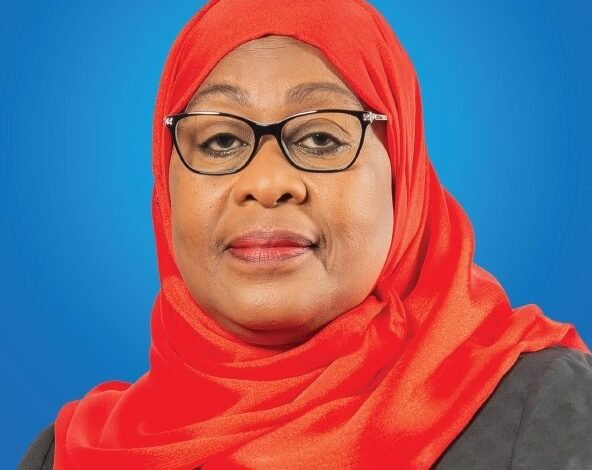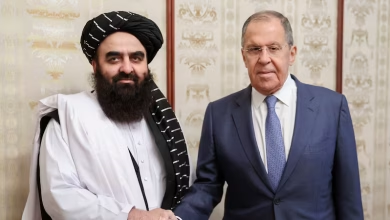
How Tanzania’s Path to Prosperity is Shaping Its Future
Tanzania has emerged as one of Africa’s leading economies with an impressive 6% average GDP growth rate in the last decade. This achievement highlights the country’s continued progress toward prosperity.
The nation has evolved from its agricultural roots into a diversified powerhouse. Its development spans reliable infrastructure, state-of-the-art technology and social advancement. These changes reflect Tanzania’s steadfast dedication to eco-friendly development and better living standards for its 63 million citizens.
This complete analysis reveals the nation’s road to prosperity by dissecting growth drivers, infrastructure projects, investment potential and social programs that shape Tanzania’s future.
Tanzania’s Economic Renaissance
Tanzania’s economy has changed from a controlled system to a thriving market economy. The country started its path to economic revival in 1985. This marked a big change in how the nation would develop.
From Independence to Economic Liberalization
Tanzania chose a socialist approach after gaining independence. The country started a mission to free up its economy by the mid-1980s. The government made big policy changes. They unified the exchange rate and rebuilt the financial sector. These changes ended up creating more private investment and economic growth.
Key Growth Drivers and Sectors
The economy showed great strength with real GDP growing by 5.3% in 2023, up from 4.7% in 2022. We saw growth mainly in these areas:
- Agriculture (contributing 26% to GDP)
- Manufacturing (8% of GDP)
- Construction and infrastructure development
- Tourism and services sector
Recent Economic Achievements and Milestones
Tanzania’s recent economic success stands out in many ways. The country managed to keep strong fiscal discipline as inflation dropped to 3.8% in 2023. Banks proved their stability by reducing non-performing loans to 4.3% in 2023. This showed how reliable the financial system had become.
The country handled its debt well, with public debt at 45.5% of GDP in 2022/23. The current account deficit improved by a lot, dropping from 7.3% of GDP in 2022 to 3.8% in 2023. Strong exports and tourism income helped achieve this improvement.
Tanzania’s future looks bright with GDP growth expected to hit 5.7% in 2024 and 6% in 2025. Public investments and business reforms support these projections. The country continues its steady march toward prosperity.
Infrastructure and Digital Transformation
Infrastructure development is the life-blood of Tanzania’s modernization efforts. Heavy investments have altered the map of both physical and digital worlds nationwide.
Modern Transportation Networks
Tanzania’s transportation infrastructure has seen remarkable improvements. The Dar es Salaam Bus Rapid Transit (BRT) system has become a soaring win. Travel time dropped from over two hours to under one hour on the 16-kilometer Kimara-Kivukoni corridor. The system showed impressive safety improvements and achieved a 79% reduction in pedestrian fatalities.
The country’s railway network continues to grow by a lot. A new 541-kilometer modern standard gauge railway now connects its administrative and commercial capitals. This development is part of a larger 2,561-kilometer rail network plan to boost domestic and regional trade.
Digital Infrastructure Development
Tanzania’s digital transformation builds on the Tanzania Technology Stack, launched in July 2024. This complete framework has these essential platforms:
- Jamii Namba (digital ID) – serving over 25 million citizens
- Jamii Malipo (digital payments)
- Jamii Data Shirikishi (data exchange platform)
The National ICT Broadband Backbone expansion makes up 44% of the 2024/2025 expenditure. This includes building a 186-kilometer line from Kigoma to DR Congo. These investments will strengthen regional connectivity and support digital economic growth.
Smart City Initiatives
Tanzania advances its urban development through smart city initiatives in major metropolitan areas. The government started feasibility studies for smart city development in Dodoma, Arusha, and Mbeya. These projects focus on smart transportation systems, power grids, and improved public safety systems.
Tanzania’s smart cities market shows promising growth potential. Projections show an annual growth rate of 25.08% between 2024 and 2029. These initiatives will improve urban service delivery and boost citizens’ quality of life through technology-driven solutions.
Investment Climate and Business Opportunities
Tanzania has emerged as one of Africa’s top investment destinations over the last several years. The country’s Foreign Direct Investment (FDI) flows showed impressive growth and jumped by 20.8% to USD 1,437.6 million in 2022.
Foreign Direct Investment Trends
Investment projects worth USD 2,069.49 million received approval in the July-September 2023 quarter. These projects will create 86,986 new jobs. The country’s total FDI stock reached USD 18.6 billion, which makes up 24.2% of GDP. This reflects how attractive Tanzania has become to international investors.
Emerging Business Sectors
Several key sectors drive Tanzania’s strong investment growth:
- Finance and insurance (growing at 16%)
- Information and communication technology
- Manufacturing and industrial development
- Mining and quarrying
- Commercial building construction
Government Incentives and Reforms
The New Investment Act of 2022 has changed Tanzania’s investment framework completely. Local investors now need only USD 50,000 as minimum investment, and fiscal incentives last five years. The government launched an electronic investment window (TeIW) that makes processing investment certificates and permits more efficient.
Investors can benefit from zero-rated VAT on exports and 100% capital expenditure allowance for agricultural investments. They can also transfer all their foreign exchange earnings outside the country. Special economic zones (SEZs) offer extra benefits, including a ten-year break from income tax for qualified investments.
These changes have made Tanzania more appealing to investors. The number of registered investment projects grew by 26% between March 2021 and February 2023.
Social Development and Human Capital
Human capital development drives Tanzania’s progress through improvements in education, healthcare, and youth programs that shape the nation’s future workforce.
Education and Skills Development
Tanzania’s education system shows strong results with national literacy rates reaching 76% in 2021, a six-percentage point increase from 2015. The Technical and Vocational Education and Training (TVET) system has grown and focuses on better access, quality, and equity. Major accomplishments include:
- Secondary school enrollment grew by 15 percentage points
- Fee-free education policy took effect
- Technical education programs expanded
- Industry-education partnerships flourished
Healthcare System Improvements
Tanzania’s healthcare sector made major strides in maternal and child health services. Skilled healthcare workers now attend 85% of births, up from 69.6% between 2014-15 and 2020-21. Child health indicators improved as stunting rates among children under five dropped from 42% to 34%. These numbers reflect better nutrition and healthcare access nationwide.
Youth Employment Initiatives
Youth unemployment stands at 11.5%, and Tanzania responds with targeted programs that improve employability and entrepreneurship. Government programs concentrate on life skills, livelihoods, and leadership development. The Youth Economic Empowerment program plans to equip 33,000 youth with business and leadership skills. This initiative aims to help 5,000 young Tanzanians find employment and create 2,800 rural enterprises.
Tanzania has transformed from a state-controlled economy into a market-driven nation through well-planned reforms and steady development. The country balances growth across economic sectors and modernizes infrastructure. These social development initiatives make Tanzania an attractive investment destination in East Africa.
Tanzania focuses on developing human capital and has made great progress in digital transformation. The country’s transportation infrastructure builds a strong foundation for growth. Experts project Tanzania’s GDP to grow 6% by 2025. Strong investment frameworks and social development programs support this growth target. These changes promise a bright future for its 63 million citizens. This complete approach to national development combines economic progress with social advancement. Tanzania now serves as a model for green growth in Africa.






